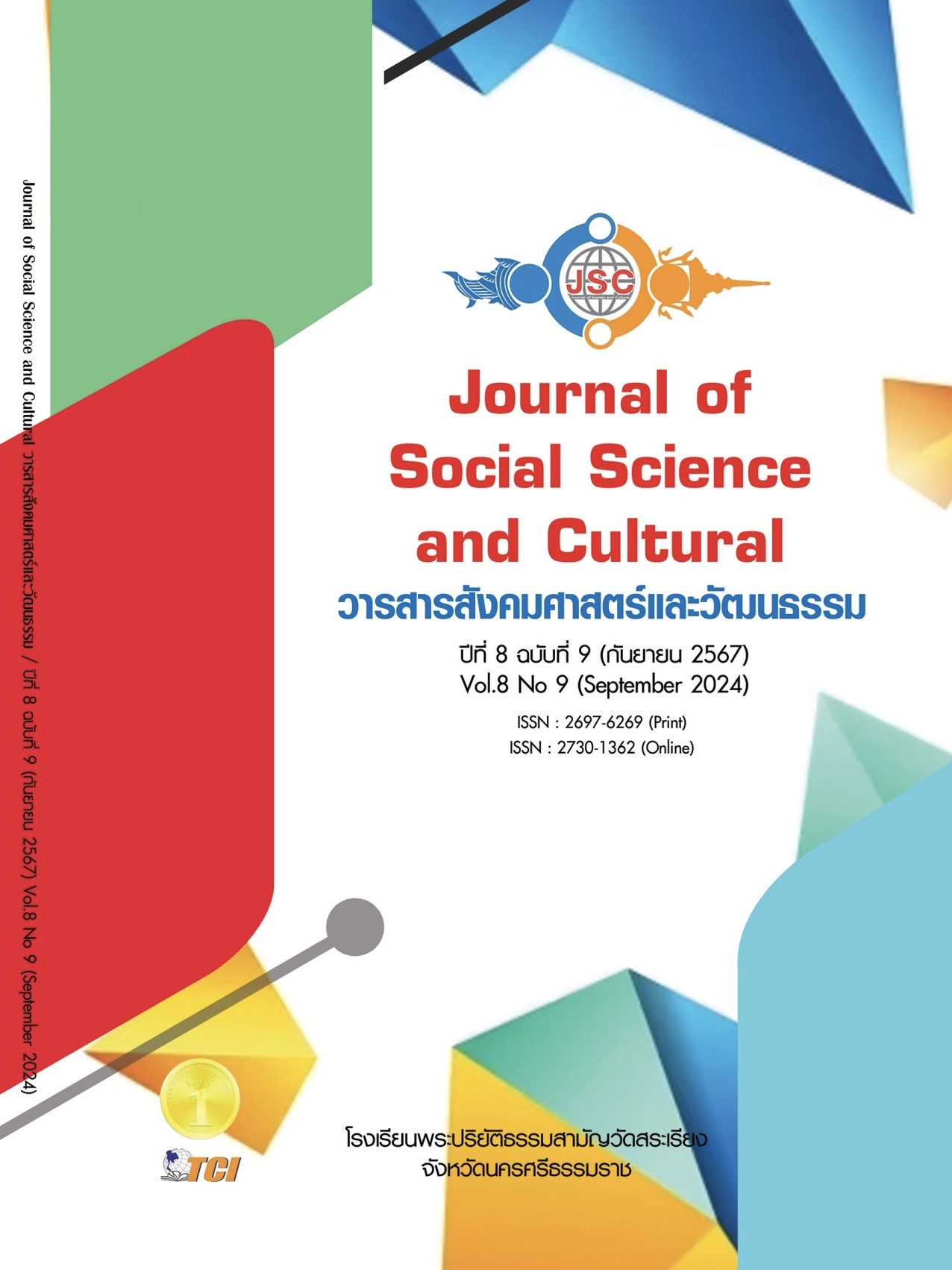INNOVATION MANAGEMENT FOR SMALL AND MEDIUM SIZED AUTOMOTIVE PARTS MANUFACTURERS TO SUPPORT THE TRANSITION TO INDUSTRY 5.0
Main Article Content
Abstract
This study examines the challenges faced by small and medium - sized enterprises (SMEs) in the automotive parts sector as they prepare for Industry 5.0, focusing on innovation and organizational development in response to government initiatives. The research addresses the paucity of tailored management innovations that align with the specific contexts and constraints of individual entrepreneurs. The study pursues three primary objectives: 1) to develop an index tool for measuring the significance of government - promoted initiatives; () to formulate strategies facilitating the transition to Industry 5.0; and 3) to design a continuous development cycle supporting this transition. Employing a qualitative methodology, the research combines document analysis with in - depth interviews of 20 key informants. The Quality Function Deployment (QFD) technique is applied to develop the measurement tool, which is subsequently validated through consultation with five SME entrepreneurs. The findings reveal that: 1) The developed index tool effectively quantifies the importance of promoted initiatives, with innovation for profit, market analysis, and network innovation emerging as the most critical factors. 2) Four strategic approaches for Industry 5.0 preparation are proposed, based on the TOWS Matrix: a proactive strategy (SO) emphasizing adaptation to agro - industry and high - value products; a corrective strategy (WO) focusing on reverse engineering and critical thinking; a preventive strategy (ST) aimed at software personnel development; and a defensive strategy (WT) promoting recycling and technology transfer. 3) The proposed continuous development cycle comprises 4 steps, utilizing modern business analysis tools and technologies, providing an effective approach to drive automotive parts sector Thai SMEs towards Industry 5.0
Article Details
References
ชูศักดิ์ พรสิงห์ และคณะ. (2565). การวัดความพร้อมของอุตสาหกรรม 4.0 ในประเทศไทยโดยใช้เครื่องมือชุดดัชนีชี้วัดความพร้อมของอุตสาหกรรม 4.0 สำหรับประเทศไทย. กรุงเทพมหานคร: มหาวิทยาลัยศิลปากร.
ภัทรเวช ธาราเวชรักษ์ และคณะ. (2560). การวิเคราะห์สภาวะการแข่งขันของผู้ประกอบการชิ้นส่วนยานยนต์ไทยภายใต้ข้อตกลงเขตการค้าเสรีอาเซียน. วิศวกรรมสาร มหาวิทยาลัยนเรศวร, 12(1), 73-82.
วิยะดา ทองเสือ. (2566). ส่องทิศทางอุตสาหกรรมชิ้นส่วนยานยนต์ไทย. เรียกใช้เมื่อ 1 มกราคม 2567 จาก https://krungthai.com/Download/economyresources/EconomyResourcesDownload_1918Research_Note_Auto_Part_20_03_66.pdf
สถาบันเพิ่มผลผลิตแห่งชาติ. (2563). Industry 5.0 เตรียมพร้อมสู่ยุค Cobots ก้าวใหม่ที่สำคัญแห่งโลกอนาคต. เรียกใช้เมื่อ 1 มกราคม 2567 จาก https://piu.ftpi.or.th/wp-content/uploads/2020/07/Industry-5.0-.pdf
สำนักงานที่ปรึกษาด้านอุตสาหกรรมประจำญี่ปุ่น. (2561). รายงาน Society 5.0. เรียกใช้เมื่อ 1 มกราคม 2567 จาก https://plan.cdd.go.th/wp-content/uploads/sites/97/2018/10/รายงานเรื่องนโยบาย-Socaity-5.0full.pdf
สำนักงานนวัตกรรมแห่งชาติ. (2563). การจัดการสู่องค์กรนวัตกรรม. เรียกใช้เมื่อ 1 มกราคม 2567 จาก https://ifi.nia.or.th/wp-content/uploads/2020/09/Innovative-Organization-BOK_digital_08-2020.pdf
สำนักงานพัฒนาวิทยาศาสตร์และเทคโนโลยีแห่งชาติ. (2565). เครื่องมือชุดดัชนีชี้วัดอุตสาหกรรม 4.0. เรียกใช้เมื่อ 1 มกราคม 2567 จาก https://www.thindex.or.th/Content/assets/fileTemplate/ThailandIndex_Manual_20220609.pdf
Burata, J. et.al. (2023). Industry 5.0 Past Present and Nearly Future. Procedia Computer Science Journal, 219(1), 778-788.
Jensen, F. (2017). Quality Function Deployment, The Evolved 4-Phases Model, Publisher Lulu.com. Bangkok: First Edition.
Leng, J. et al. (2022). Industry 5.0, Prospect and Retrospect. Journal of Manufacturing Systems, 65(1), 279-295.
Muller, J. (2020). Enabling Technologies for Industry 5.0, Results of a workshop with Europe’s technology leaders. European: European Commission Workshop Handbook.


